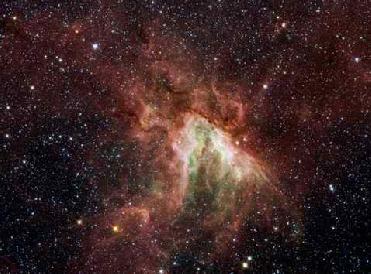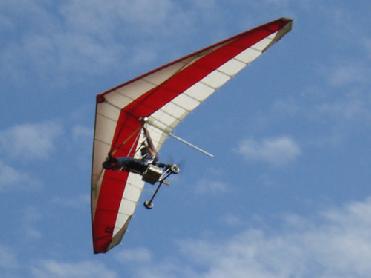
An infrared view of the choppy star-making cloud called M17, or the Swan nebula. Image credit: NASA/JPL-Caltech/Univ of Wisconsin
WASHINTON (BNS): NASA's Spitzer Space Telescope has captured the turbulent star-forming region, M17 or the Swan nebula, where rivers of gas and stellar winds are eroding thickets of dusty material. This new discovery will help researchers understand how solar systems like our own are able to form and persist in the rough, celestial seas of space.
In a research published in the December 10 issue of the Astrophysical Journal, Matt Povich of the University of Wisconsin, Madison, said that the stars are like rocks in a rushing river. �Powerful winds from the most massive stars at the center of the cloud produce a large flow of expanding gas. This gas then piles up with dust in front of winds from other massive stars that are pushing back against the flow,� Povich said.
Spitzer's new infrared view of the stormy region, called M17, or the Swan nebula, is located about 6,000 light-years away in the constellation Sagittarius. Dominating the center of the Swan is a group of massive stars, some exceeding 40 times the mass of the Sun. These central stars are 100,000 to one million times as bright as the Sun, and roar with radiation and fierce winds made of charged particles that speed along at up to 7.2 million kilometers per hour (4.5 million miles per hour). Both the wind and radiation carve out a deep cavity at the center of the picture -- an ongoing process thought to trigger the birth of new stars.
�The growth of this cavity pushes gas up against winds from other massive stars, causing �smiley-faced� bow shocks -- three of which can be seen now. The direction of the bow shocks tells researchers exactly which way the wind is blowing,� Povich said.
The lead author of the paper said that the bow shocks are like interstellar weather vanes, indicating the direction of the stellar winds in the nebula. Spitzer was able to spot the bow shocks because its infrared eyes can pierce intervening dust, and photograph large swaths of sky quickly, he said.
Robert Benjamin of the University of Wisconsin, Whitewater, co-author of the paper said that the gas being lit up in these star-forming regions looked very wispy and fragile, but looks can be deceiving. �These bow shocks serve as a reminder that stars aren't born in quiet nurseries but in violent regions buffeted by winds more powerful than anything we see on Earth,� Benjamin said.
 Next Article
Next Article












The Indian Air Force, in its flight trials evaluation report submitted before the Defence Ministry l..
view articleAn insight into the Medium Multi-Role Combat Aircraft competition...
view articleSky enthusiasts can now spot the International Space Station (ISS) commanded by Indian-American astr..
view article